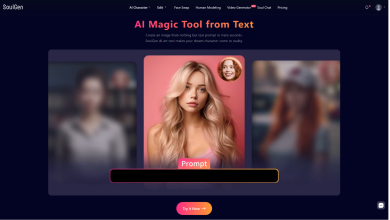
The Rise of Agentic AI
The AI community is buzzing about the evolution of “agentic AI,” and for good reason. Instead of passively conducting research, generating text or designing images, these new systems have gained the ability to act on our behalf. They can search for products, negotiate with vendors, book flights, even interact with other agents.
The potential is clearly enormous. Imagine telling your AI: “I’m flying to Madrid next week – find me the best flight, hotel, a restaurant reservation, and book it.” No forms, no searches, no apps, Just a digital agent working for you.
But despite the excitement, there’s an elephant in the room that has yet to be addressed. Agentic AI is only as good as the data it ingests. And today, most of that data is scraped from the internet without anyone granting permission.
The Consent Gap
The internet has long tolerated a “scrape now, ask later” culture. But as AI scales, the stakes are higher. These models don’t just index information; they monetize it. They train on copyrighted works, personal data, and proprietary material – without consent, attribution, or compensation.
Unsurprisingly, lawsuits are piling up, with recent examples:
- Warner Bros. is suing Midjourney for allowing its users to create AI-generated images of its copyrighted characters, including Superman and Bugs Bunny (Associated Press).
- Penske Media, publisher of Rolling Stone and The Hollywood Reporter, is suing Google, alleging that its AI summaries are illegally using its reporting (Wall Street Journal).
- Getty Images sued Stability AI for allegedly copying more than 12 million photographs without license (CNBC).
These cases highlight a consistent problem: AI systems are being built on shaky legal and ethical ground. Without consent, they expose companies to liability, regulators to headaches, and users to erosion of trust.
Why AI Needs Permission
Here’s a reality check: AI companies aren’t competing on algorithms. Most core models are open source or quickly commoditized. The real battleground is data quality.
Despite this, much of the data that powers AI is low-signal or even fraudulent. Studies estimate that 30–60% of internet traffic consists of bots or click-fraud. If AI is trained on “garbage inputs,” it produces unreliable or biased outputs, and you get “garbage out.”
The only way forward is consent-first, human-verified data. When individuals explicitly grant permission, every datapoint comes with provenance, usage rights, and an auditable record. That’s not only good for compliance, it’s also better for performance. Clean inputs yield better, more trustworthy models.
A Transparent Value Exchange
Consent-based data infrastructure doesn’t just protect individuals. It’s equally beneficial to AI builders and enterprises too.
- For individuals: Privacy is respected, and data is shared intentionally, not harvested. And when an individual’s data is used, people are fairly compensated, thereby creating the first equitable model in the digital economy.
- For AI developers: Every datapoint is certified, auditable, and regulator-ready. Lawsuits and compliance risks are reduced. Models are trained on higher-quality inputs.
- For regulators: Consent is the first step toward a clear, enforceable framework. GDPR and the EU AI Act both demand transparency, fairness, and accountability. Only consent-rich datasets make compliance practical.
The end result is a fair and transparent value exchange. People know when their data is used, and they benefit from it. Companies get clean, reliable data streams they need. And AI systems evolve on a foundation of trust.
Europe Can Lead
Europe is uniquely positioned to lead the charge, as GDPR already requires explicit consent for data usage, and the EU AI Act raises the bar for transparency and accountability.
Rather than considering this as a regulatory burden, enterprises should view it as an opportunity. By embedding consent at the architecture level, Europe can become an example and global standard for trustworthy AI.
The key takeaway is that consent-based data is not just about regulatory compliance, but equally about competitive advantage. As agentic AI takes over tasks from search to commerce, the systems built on permissioned data will be the platforms that people trust, regulators accept, and markets reward.
A Path Forward
Agentic AI is one of the most promising and impactful developments in technology since the birth of the internet itself. But if we continue to ignore the consent gap, Agentic AI’s rollout and adoption will be slowed by lawsuits, regulatory battles, and public skepticism.
The solution is clear: treat data as an individual’s asset, not a free resource. Build architectures in which agents ask permission before they act, and where every datapoint carries provenance and auditability. Compensate people fairly when their data fuels AI.
The next wave of AI innovation will not come from bigger models or faster chips. It will come from building systems on consented, auditable, human-verified data. That’s how agentic AI can fulfill its promise, and how we ensure it works equitably, and legally, for everyone. In short, AI needs permission.





